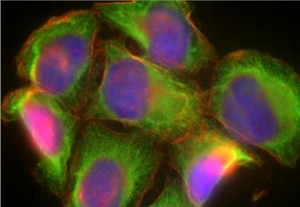Scientists at the Ruhr-Universität Bochum have identified a protein, Pannexin1, that is required for normal functioning of brain cells and learning in mice. Animals lacking Pannexin1 display autism-like symptoms.
Pannexin1 proteins are found in the vertebrate central nervous system. They are channels that traverse the cell membrane, establishing a pore that allows particular signaling molecules, including the energy storage molecule adenosine triphosphate (ATP), to cross through. They are expressed abundantly in the hippocampus, a region of the brain that plays a central role in long term memory.
Researchers recorded activity from hippocampal cells in brain slices taken from. When new memories are formed, connections between cells are strengthened to amplify their communication in a process called long term potentiation. In animals lacking the Pannexin1 channel, long term potentiation is enhanced earlier and more persistently. Although this resembles memory storage, it saturates the brain’s connections. The communication between cells is increased to such an extent that further increases are no longer possible, reducing the capacity for new learning.
This altered function was reversed by applying adenosine and blocking glutamate neurotransmitter signaling. This suggests that the absence of Pannexin1 depletes extracellular adenosine/ATP, thereby enhancing glutamate transmission. Scientists believe this is part of feedback mechanism that becomes dysregulated in mice lacking Pannexin1. In normal animals, the channel releases ATP, which acts to decrease glutamate signaling. When Pannexin1 channels are missing, this form of glutamate regulation is lost; glutamate transmission is critical for long term potentiation. Without this feedback, normal brain function and memory formation becomes disrupted.
